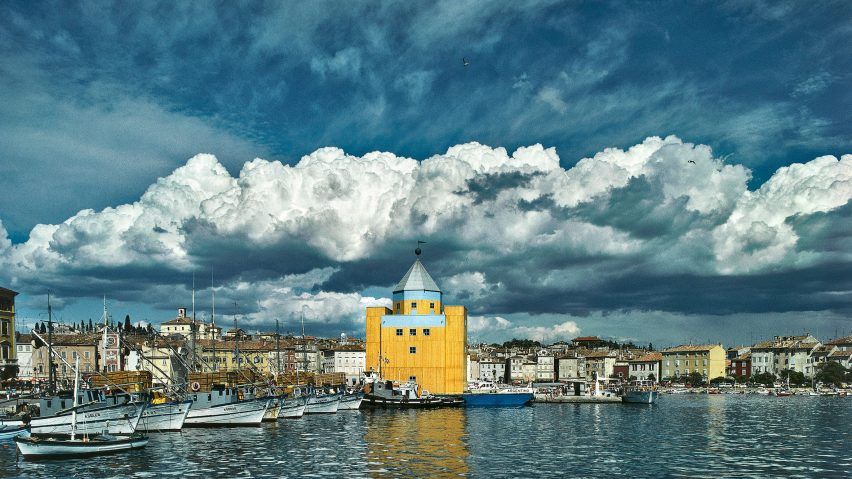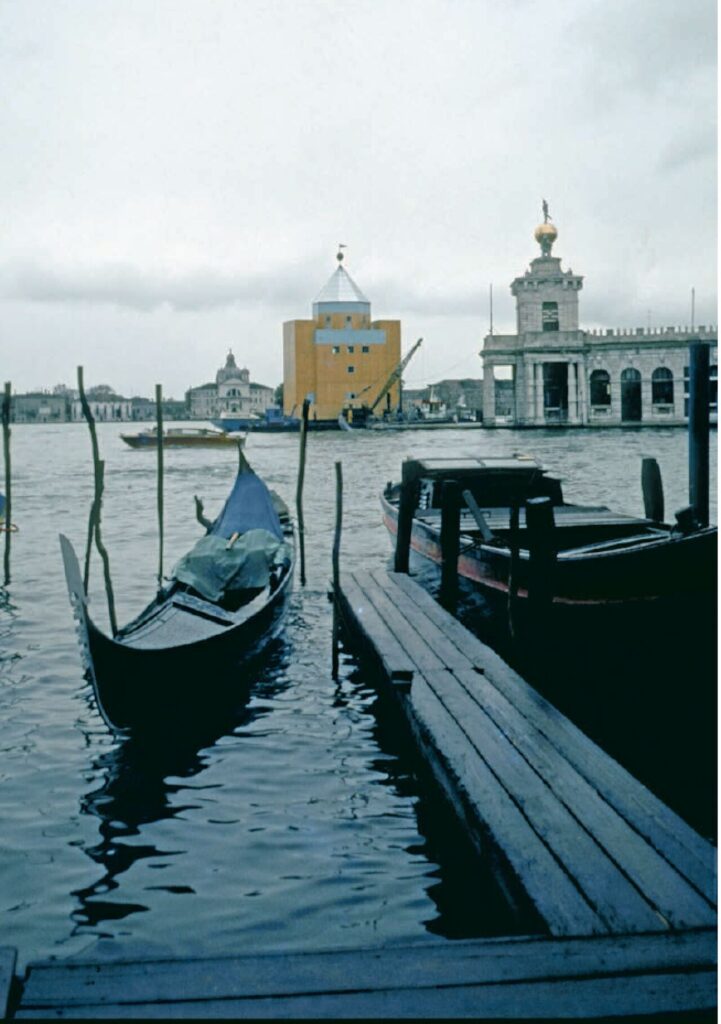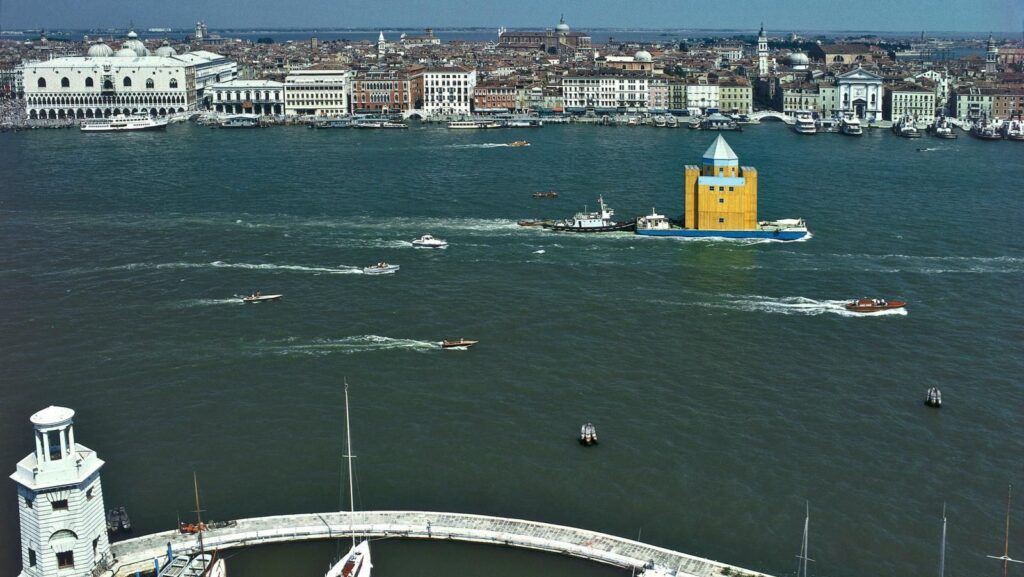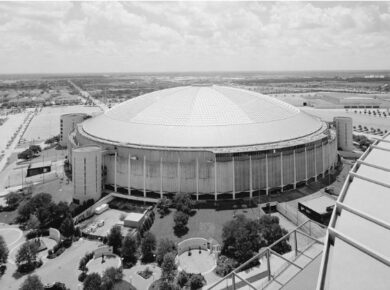Aldo Rossi (born Milan, 3 May 1931) was an Italian architect and designer. He is regarded as one of the leading architects and designers of the twentieth century. Rossi’s style is often considered to belong to post-modernism. In 1988, Rossi became an honorary member of the American Institute of Architects and in 1990, he won the Pritzker Prize for architecture. As a designer, he has designed utensils such as cooking pots and coffee pots for Alessi since 1984.
It is impossible to summarise the impact and genius of Aldo Rossi in a short post.

I would like to dwell on one of his most talked-about projects: the Teatro del Mondo that he designed for the 1979 Venice Architecture Biennale.

Photo: © Antonio Martinelli
The Theatre of the World was a tower theater constructed atop a floating barge which sat in the Venetian harbor opposite the Customs House. The idea behind the project was to recall the floating 16th century Venetian theater, the theatrum mundi.
Photo: © Antonio Martinelli
Constructed in the Fusina shipyards, the theatre was towed across to Venice by tugboat. The building was erected over steel beams and welded together to form a raft. Its total height above the platform of the raft is 25m. It consists of a cuboid 9.5 x 9.5 m by 11m in height, which supports an octagon of 6m high. The top of the cuboid gives access to a balcony with views of the Giudecca in San Marco’s, almost on a level with the statue of fortune which stands on the Customs House. The tubular steel structure was paneled with wood, both inside and out.

Source: architectuul.com
Rossi planned this floating structure as a versatile stage for the performing arts. He explained the project would be marked by three aspects: The first, that it would have a usable space without a defined position, the second, that the volume would experience movement relative to Venice, and third, for it to be on the water; the limit and boundary of construction in Venice. Following the Biennale, the theater crossed the Adriatic Sea and settled in Dubrovnik. In 1981 it was dismantled.

Photo: architectuul.com
About the Author:

Bruno Dursin – Managing Director at Believe in Steel. Bruno has more than 30 years of experience in promoting steel & steel solutions. His clients benefit from his extensive network within the building industry.






